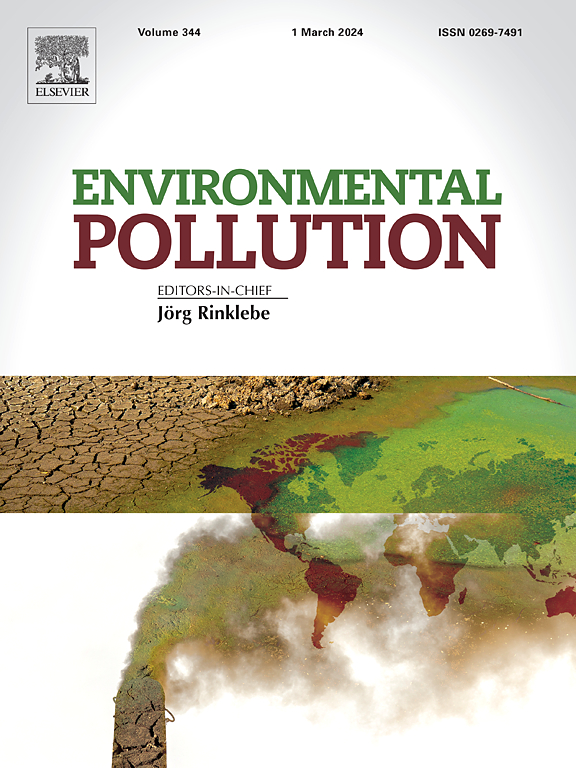What a load of rubbish: The impact of anthropogenic litter on urban freshwater diversity
IF 7.3
2区 环境科学与生态学
Q1 ENVIRONMENTAL SCIENCES
引用次数: 0
Abstract
The abundance of anthropogenic litter (AL) in aquatic environments is an increasing global problem. Most research on the effects of AL has focussed on marine environments, with research examining the ecological effects of AL in freshwater ecosystems largely missing. Our study examines the impacts of AL on macroinvertebrate diversity in two urban freshwater systems in West Yorkshire, in the United Kingdom. Two urban river and two canal reaches were surveyed for macroinvertebrates from the bed sediments of riffles (in a river), open water and macrophyte habitats (in a canal), and AL items (from both freshwaters). We found higher local taxonomic richness and differences in community composition in 1) the bed sediments of riffles compared to AL items within urban rivers, and 2) open water and emergent vegetation than AL items within our canal reaches. Taxonomic richness was higher on metals and plastics in urban rivers than canal reaches, and macroinvertebrate community composition was distinct between AL types (e.g., fabrics and metals, plastics and polystyrenes), possibly due to differences in structure, shape and texture. AL items in both urban freshwaters supported unique taxa, indicating that AL items may provide a habitat for macroinvertebrates where physical habitat complexity is poor. The restoration of natural physical habitat and removal of AL should be a key priority for freshwater conservation. However, rinsing AL items prior to removal during litter clean-ups is essential to minimise any potential macroinvertebrate loss. In urban freshwaters, physical habitat could be increased by gravel augmentation, installing large wood or boulders.


真是一堆垃圾:人为垃圾对城市淡水多样性的影响
水生环境中大量的人为凋落物(AL)是一个日益严重的全球性问题。大多数关于AL影响的研究都集中在海洋环境上,而关于AL对淡水生态系统的生态影响的研究在很大程度上缺失。我们的研究考察了AL对英国西约克郡两个城市淡水系统中大型无脊椎动物多样性的影响。调查了两条城市河流和两条运河河段的河床沉积物、开阔水域和大型植物栖息地(运河内)的大型无脊椎动物,以及来自两种淡水的AL项目。结果表明:1)河堤河床沉积物的本地分类丰富度和群落组成差异高于城市河流的AL项目;2)运河河段的开阔水域和新兴植被的本地分类丰富度和群落组成差异高于AL项目。城市河流中金属和塑料的分类丰富度高于运河河段,大型无脊椎动物群落组成在AL类型(如织物和金属,塑料和聚苯乙烯)之间存在差异,这可能是由于结构,形状和质地的差异。城市淡水AL物项均支持独特的类群,表明AL物项可能为物理生境复杂性较差的大型无脊椎动物提供了栖息地。恢复自然生境和清除AL应是淡水保护的一个关键优先事项。然而,在清理垃圾之前,对人工智能物品进行冲洗是必要的,以尽量减少任何潜在的大型无脊椎动物损失。在城市淡水中,可以通过增加砾石,安装大木材或巨石来增加物理栖息地。
本文章由计算机程序翻译,如有差异,请以英文原文为准。
求助全文
约1分钟内获得全文
求助全文
来源期刊

Environmental Pollution
环境科学-环境科学
CiteScore
16.00
自引率
6.70%
发文量
2082
审稿时长
2.9 months
期刊介绍:
Environmental Pollution is an international peer-reviewed journal that publishes high-quality research papers and review articles covering all aspects of environmental pollution and its impacts on ecosystems and human health.
Subject areas include, but are not limited to:
• Sources and occurrences of pollutants that are clearly defined and measured in environmental compartments, food and food-related items, and human bodies;
• Interlinks between contaminant exposure and biological, ecological, and human health effects, including those of climate change;
• Contaminants of emerging concerns (including but not limited to antibiotic resistant microorganisms or genes, microplastics/nanoplastics, electronic wastes, light, and noise) and/or their biological, ecological, or human health effects;
• Laboratory and field studies on the remediation/mitigation of environmental pollution via new techniques and with clear links to biological, ecological, or human health effects;
• Modeling of pollution processes, patterns, or trends that is of clear environmental and/or human health interest;
• New techniques that measure and examine environmental occurrences, transport, behavior, and effects of pollutants within the environment or the laboratory, provided that they can be clearly used to address problems within regional or global environmental compartments.
 求助内容:
求助内容: 应助结果提醒方式:
应助结果提醒方式:


